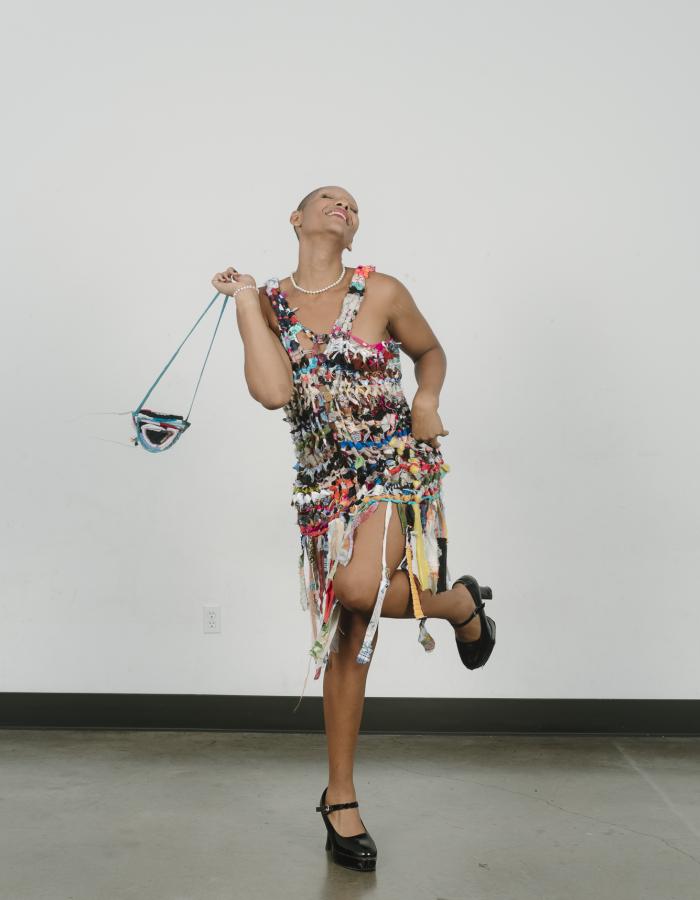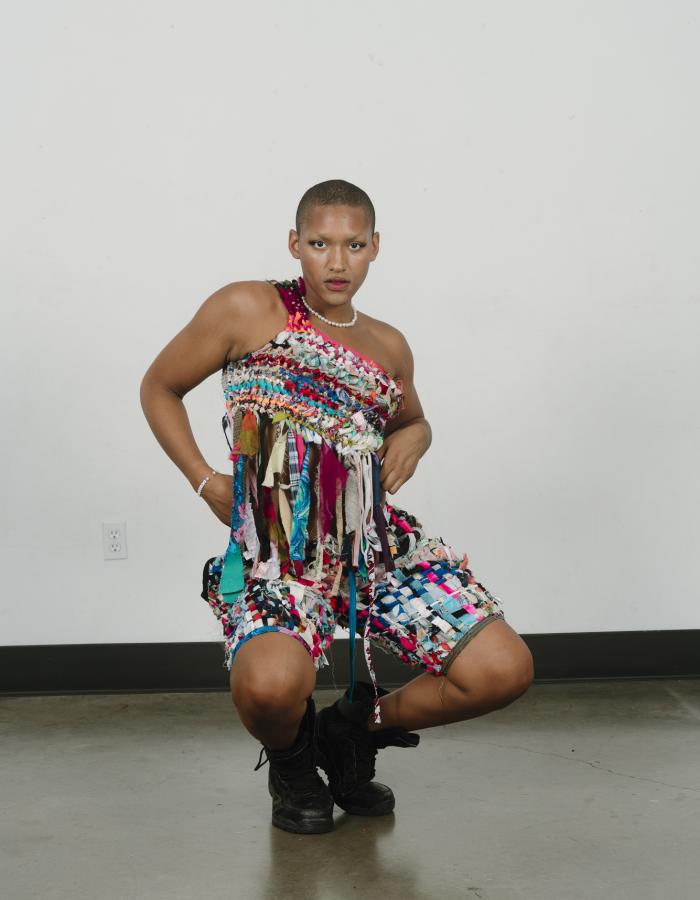JRAT
Grey Sheep

Location
seattle / united states
University
BFA Parsons The New School for Design
Graduation year
2012
Janelle Abbott (JRAT) was born into the fashion industry—her parents owned a clothing manufacturing company where they produced Tencel garments in Seattle for over 20 years. This early exposure to the BTS of garment production gave Janelle a sense of reverence for the labor involved in creating clothing. She received a BFA in fashion design from Parsons School of Design in 2012. After graduation, Timo Rissanen, her former professor, employed Janelle to sew white t-shirts in Helsinki’s Amos Anderson Museum as the subject of “15%”, an installation conceived with Salla Salin. The objective of the installation was to highlight both the wastefulness of the industry as well as the true value of the labor behind garment production. The performance was reprised at New York City’s Kellen Gallery in 2014 with Janelle performing once again.
By the early 2010’s, the boutique nature of her parents business was no longer the industry norm; fast fashion had taken hold of the consumer market, subjugating millions of sewers and factory workers, world-wide, to unethical, slave-like conditions in order to keep the cost of manufacturing minuscule, the price of garments artificially low, and the profits for CEOs and share-holders astronomical. In the face of the unethical, exploitative, and anti-ecological agenda of corporate fashion, Janelle decided to carve her own path—one committed to upcycling, sustainability, hand craft, and the zero waste design methodology. Zero waste patterns are like puzzles: all the pattern pieces fit together so that nothing is wasted, whereas traditional methods discard 15% of textiles.
Through her work, Janelle seeks to reclaim as much as possible from the trash heap of hyper consumerism in order to reduce the weight that modern life is impinging on our fragile and precious planet. Reclaimed, found, second-hand, and donated goods are the foundation of the clothing, furniture, sculpture, and tapestries that she creates. Aside from being environmentally positive, used materials also hold sentimental, emotional, and historical value—these narratives of past lives live on through her work in whispers and echoes. She works with private clients through an initiative called Wardrobe Therapy which begins with an intensive interview process so that Janelle can holistically understand the clients relationship to fashion—how it started, where it’s at, where they desire their style to go. She then reconstructs old, beloved (yet currently unworn) garments from the client's closet and transforms them into pieces the client will wear once again and love all the more.
Densely pleated, boldly clashing, and unexpectedly rhythmic, Janelle’s work is scrappy, unapologetic, and a testament to just how much time and energy it takes for real humans to manufacture and produce every consumer product we engage with.






















































































































